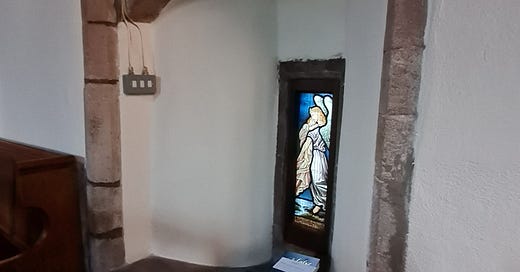What is a squint? In church architecture it is sometimes also called a “hagioscope” and describes a splayed opening made in a wall “to allow worshippers to see through to the high altar”. I’m going to take issue with that definition in this post. A squint is generally an opening in a wall, usually in a chancel wall. We’ll come back to this, first let’s talk about lepers.
A “leper” squint is a term invented by the Victorians to describe a low opening in a chancel wall like a window, leading to the outside. The Victorians merrily wended their way around the UK in the 19th century, taking plaster off walls (destroying countless medieval paintings in the process), external render off outside walls and thus exposing long-covered architectural features. One of these was small openings fairly low down in the chancel, most commonly on the north wall. Many still existed as windows, others had been filled in.
The theory was that lepers, being unwelcome in churches for fear of infection, needed access to church services so these little windows allowed them access. Some of the books also tell us they received communion through them. So here’s one example. Most of them now have glass inserts, and this one is at Caldbeck in Cumbria.
Here you can see the splayed nature of this squint, though it should be said that this is also part of a more regular internal squint on the other side of the left wall. It’s partially blocked now and rebuilt, hence the curved wall.
The story of leper squints is thoroughly made up, though we still see it in church guides to this day. In actual fact, at Caldbeck, there was a hospital next door which catered for pilgrims and lepers, using a holy well as curative water.
Keep reading with a 7-day free trial
Subscribe to Incola ego sum in terra to keep reading this post and get 7 days of free access to the full post archives.




